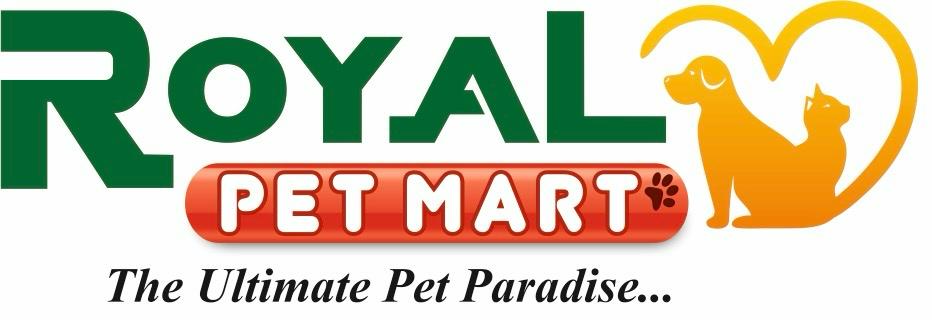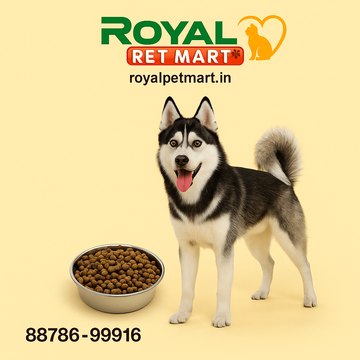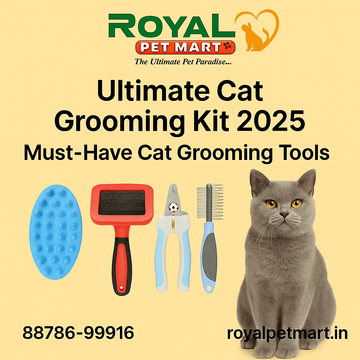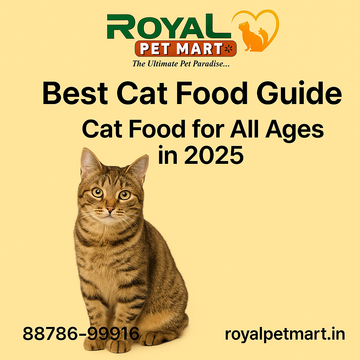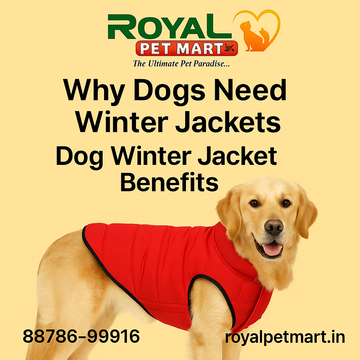Dry Dog Food vs Wet Dog Food: What’s Best for Your Furry Friend?
by Royal Pet mart on Apr 27, 2025

Introduction
When I brought home my first puppy, I soon learned that selecting dog food was a serious deal. Feeding a dog is so much more than just filling their bowl. It is about keeping your dog happy, healthy, and well nourished. As a pet owner, I have learned that the two main types of dog food, dry and wet dog food, have different benefits and drawbacks. Whether it is having a concern about how to feed a puppy or deciding whether a wet or dry diet is the best for your adult dog, I understand how complicated that might feel. This article will break it down for you based on my experience, including what I had researched on these two types of dog food, as well as which options best suit your dog through the help of websites like RoyalPetMart. Let's dig in!
Understanding Dry Dog Food
What is Dry Dog Food?
I fed my new puppy dry dog food, typically referred to as kibble, on the first day I adopted her. Dry dog food starts with something called a mix of ingredients being put through a dehydration process that turns them into small crunchy pieces that can be stored on a shelf for months. I can still recall the first bag I opened, Pedigree kibble, and how easy it was to pour right into her bowl. Puppy dry dog food is available in many formulas, based on the different stages of life (puppy to senior).
Benefits of Dry Dog Food
One thing I love about dry dog food is its long shelf life. I can buy a big bag from RoyalPetMart and not worry about it spoiling, which is great for my busy schedule. Storage is a breeze too—just toss it in a bin, and it’s ready whenever I need it. I’ve noticed it helps with my dog’s dental health; the chewing action seems to scrape off plaque, which my vet says is a bonus. Plus, it’s often more affordable—dry food price tends to be lower than wet options, especially for large breeds. I saved a lot by switching to large breed dry dog food when my pup grew.
Potential Drawbacks
But it’s not all perfect. Dry dog food has lower moisture content, which worried me at first since my dog needs to stay hydrated. I started adding a little water to her bowl to help. Some formulas also have more fillers, like corn or wheat, which I’ve read might not be as nutritious.
I check labels now to avoid those and stick to high protein dry food options from RoyalPetMart to keep her diet balanced.
Understanding Wet Dog Food
What is Wet Dog Food?
When my dog got older and her teeth started giving her trouble, I tried wet dog food. This comes in cans or pouches, packed with high moisture content—think of it like a stew or pate. Brands like Pedigree wet food or puppy wet food from RoyalPetMart are popular, and I love how it looks like a gourmet meal for her.
Benefits of Wet Dog Food
The high moisture content is a game-changer. I noticed it kept my dog hydrated, especially on hot days, which is a big plus for healthy wet dog food. It’s also super palatable—my picky eater couldn’t resist premium wet dog food like the chicken flavors. For older dogs or those with dental issues, it’s easier to chew, which made a difference when my dog’s teeth got sensitive. I’ve even used small dog wet food to tempt her when she wasn’t feeling well.
Potential Drawbacks
There are downsides, though. Once opened, wet dog food has a shorter shelf life—I learned the hard way when I left a can out too long, and it went bad. It can also be pricier; wet food costs more per serving than dry dog food, which stings on my budget. I’ve had to watch portion sizes too, as wet healthy dog food can lead to weight gain if I overfeed. Now, I measure out how much wet food to feed the dog based on her size.
Key Differences Between Dry Dog Food and Wet Dog Food
The differences between dry dog food and wet dog food really stand out when you compare them side by side. Nutritionally, dry dog food often has more carbohydrates to keep it stable, while wet dog food is higher in protein and fat, which my vet says can be better for muscle health. Cost-wise, dry dog food wins for affordability—dry food price is lower, especially for bulk buys on RoyalPetMart. Wet dog food, though, feels like a treat but adds up fast.
Storage and convenience are where dry dog food shines. I can leave a bag in the pantry for months, while wet dog food needs refrigeration after opening, which takes up space. For age and health, puppy dry dog food works well for young, active dogs, but wet dog food for small dogs suits older pets with chewing issues. I’ve mixed both for my dog, depending on her needs, which I’ll talk more about later.
How to Choose the Right Food for Your Dog
Picking the right food starts with knowing your dog. When I got my puppy, I wondered what you should feed a puppy, and it depended on her age and size. Puppies need nutrient-rich puppy wet food or puppy dry dog food for growth, while adults might do better with dry dog food for maintenance. If your dog has health issues—like kidney problems—I’ve learned wet dog food’s hydration can help, but I always check with my vet.
Speaking of vets, they’re my go-to for advice. When my dog had a sensitive stomach, my vet recommended wet dog food with limited ingredients. Combination feeding is another option I’ve tried—mixing dry dog food with wet pet food for balanced nutrition. I use RoyalPetMart to find brands like best canned dog food for puppies or high quality wet cat food (for my cat too!), adjusting based on what my pets love.
Myths and Facts About Dog Food
There’s a lot of chatter about dog food that can confuse you. I used to think wet vs dry cat food rules applied to dogs—some say wet dog food is always better, but that’s not true. It depends on the dog. Another myth is that dry dog food causes kidney issues, but my vet says it’s fine if your dog drinks enough water. I’ve seen posts on X claiming that kibble is good for dogs is debated, but evidence shows it’s great for dental health if you pick good dry dog food.
The fact is, quality matters more than type. I avoid cheap fillers and go for the best dried food for dogs with real meat. Wetting puppy food isn’t necessary unless your pup struggles to eat dry kibble, and tin dog food isn’t inherently better—it’s about balance. RoyalPetMart helps me sort through these myths with clear product info.
Conclusion
Choosing between dry dog food and wet dog food isn’t a one-size-fits-all decision—it’s about what suits your furry friend. Dry dog food offers convenience, dental benefits, and affordability, while wet dog food brings hydration and palatability, especially for picky eaters or older dogs. I’ve weighed the pros and cons, from dry food price to the shorter shelf life of wet pet options, and found that mixing both works for my dog’s needs.
Every dog is unique, so I can’t stress enough how important it is to consult your vet for personalized advice. Whether you’re feeding puppy wet food, pedigree adult dog food, or best moist dog food, RoyalPetMart is a fantastic resource to explore options. So, take the time to understand your pet’s preferences and health, and start building their perfect diet today. Your furry friend deserves the best—let’s make it happen!
